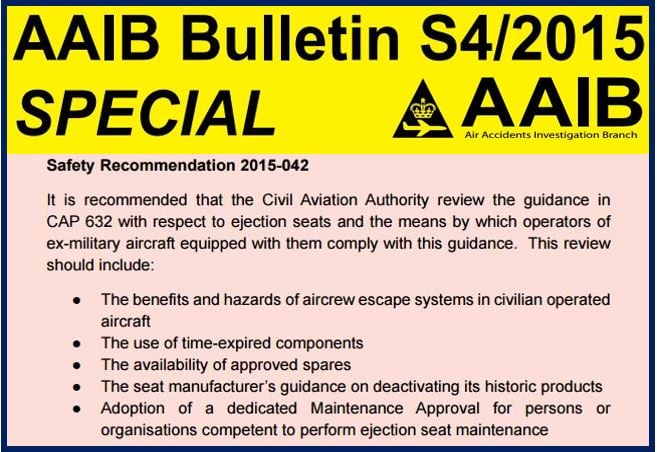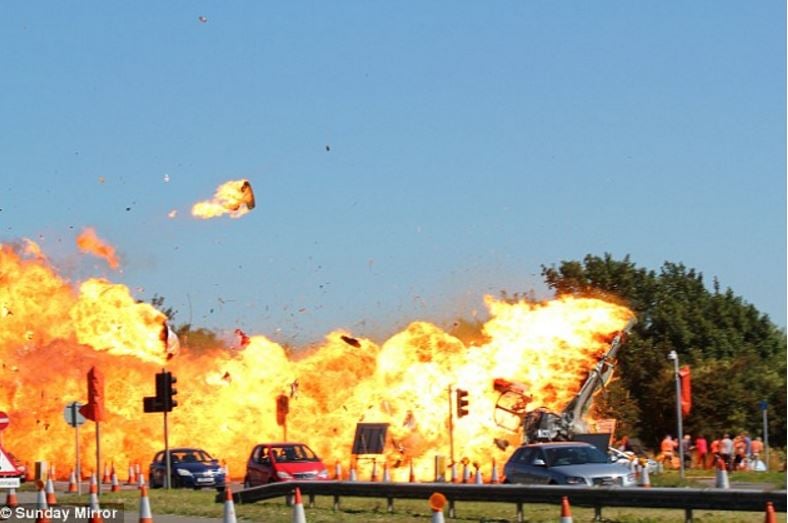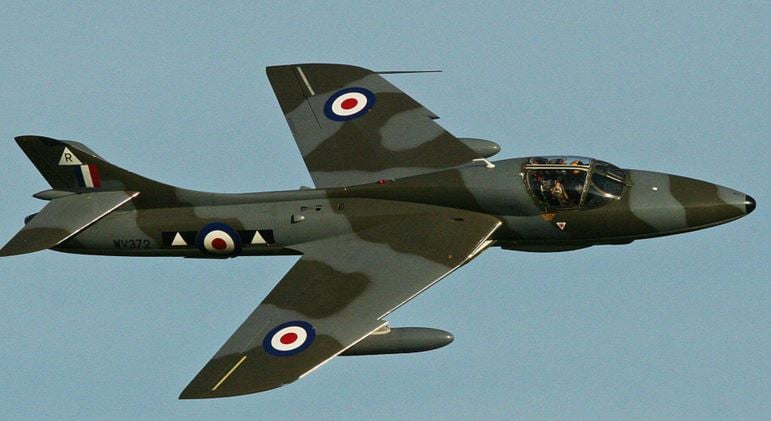The Shoreham ex-military jet that crashed on 22nd August had expired parts and an obsolete technical manual, says a Report by the Air Accidents Investigation Branch (AAIB). Several parts within the ejector seat had expired and should have been replaced.
The AAIB added that it could not determine whether the Hawker Hunter, which crashed onto traffic on the A27 and killed eleven people, met the requirements of its flying Permit.
The airplane was taking part in an air display at Shoreham Airport, also known as Brighton City Airport in West Sussex, during which it conducted a manoeuvre with both a rolling and vertical component, at the apex of which it was inverted. As it came down, it did not manage to achieve flight level before it struck the westbound carriageway of the A27.
 These recommendations refer just to the ejections seats. (Source: The AAIB Report)
These recommendations refer just to the ejections seats. (Source: The AAIB Report)
Safety recommendations made by AAIB
The final Report is not ready yet. However, the AAIB has made seven safety recommendations after carrying out an inquiry into the crash.
The report – AAIB Bulletin S4/2015 SPECIAL – has looked into the safety of ejection seats and maintanence of former military jet aircraft. The report stated that the ejector seats were “in a damaged condition”.
According to the Report:
“Some of the pyrotechnic cartridges were still live but had been subject to impact forces and post-crash fire. This posed a significant hazard to the first responders and to other personnel on the accident site. Accident response and investigation work in the vicinity of the seats was delayed until competent persons were brought to the site by the AAIB to make the seats safe.”
Manufacturer support for the Hawker Hunter had ceased after the plane was retired from military service. Its manual, the Report said, had not been updated.
For a former military aircraft to be accepted onto the civil register it needs to adhere to the requirements of CAP 733 ‘Permit to Fly Aircraft’ Section 5.
 On 22 August 2015, a vintage Hawker Hunter T7 jet aircraft crashed during a display at the Shoreham Airshow at Shoreham Airport, England, killing 11 people and injuring 16 others. It was the deadliest air show accident in the UK since the 1952 Farnborough air show crash, when 31 people died.
On 22 August 2015, a vintage Hawker Hunter T7 jet aircraft crashed during a display at the Shoreham Airshow at Shoreham Airport, England, killing 11 people and injuring 16 others. It was the deadliest air show accident in the UK since the 1952 Farnborough air show crash, when 31 people died.
Uncertain whether plane met Permit to Fly requirements
Regarding this ex-miliatary plane, the Report said:
“It (the *CAA) not determine if the aircraft met the requirements of its Permit to Fly from December 2014 onwards. The CAA indicated that it was trying to clarify the postion.” (*CAA = Civil Aviation Authority)
Regarding the CAA’s procedures regarding issuing permits to fly, the Report said:
“Safety Recommendation 2015-047: It is recommended that the Civil Aviation Authority review its procedures to ensure that a ‘Permit to Fly-Certificate of Validity’ is valid when it is issued.”
 The incident aircraft in 2013. (Image: Wikipedia)
The incident aircraft in 2013. (Image: Wikipedia)
The AAIB said its investigations are still in progress and it continues to examine the aircraft and its maintenance records to determine exactly what condition it was in before the accident.
The police confirmed that the pilot, Andy Hill, was interviewed by the police, according to the BBC.
The 51-year old pilot was described by colleagues as very experienced, with over 12,000 flight hours. He had been a British Airways captain, had flown Harrier Jump Jets and worked as an RAF (Royal Air Force) instructor before joining the airline. Apart from the Hawker Hunter, he also flew a BAC Jet Provost and a Ban’s Aircraft RV-8 at air shows.
Video – Shoreham Air Show crash
